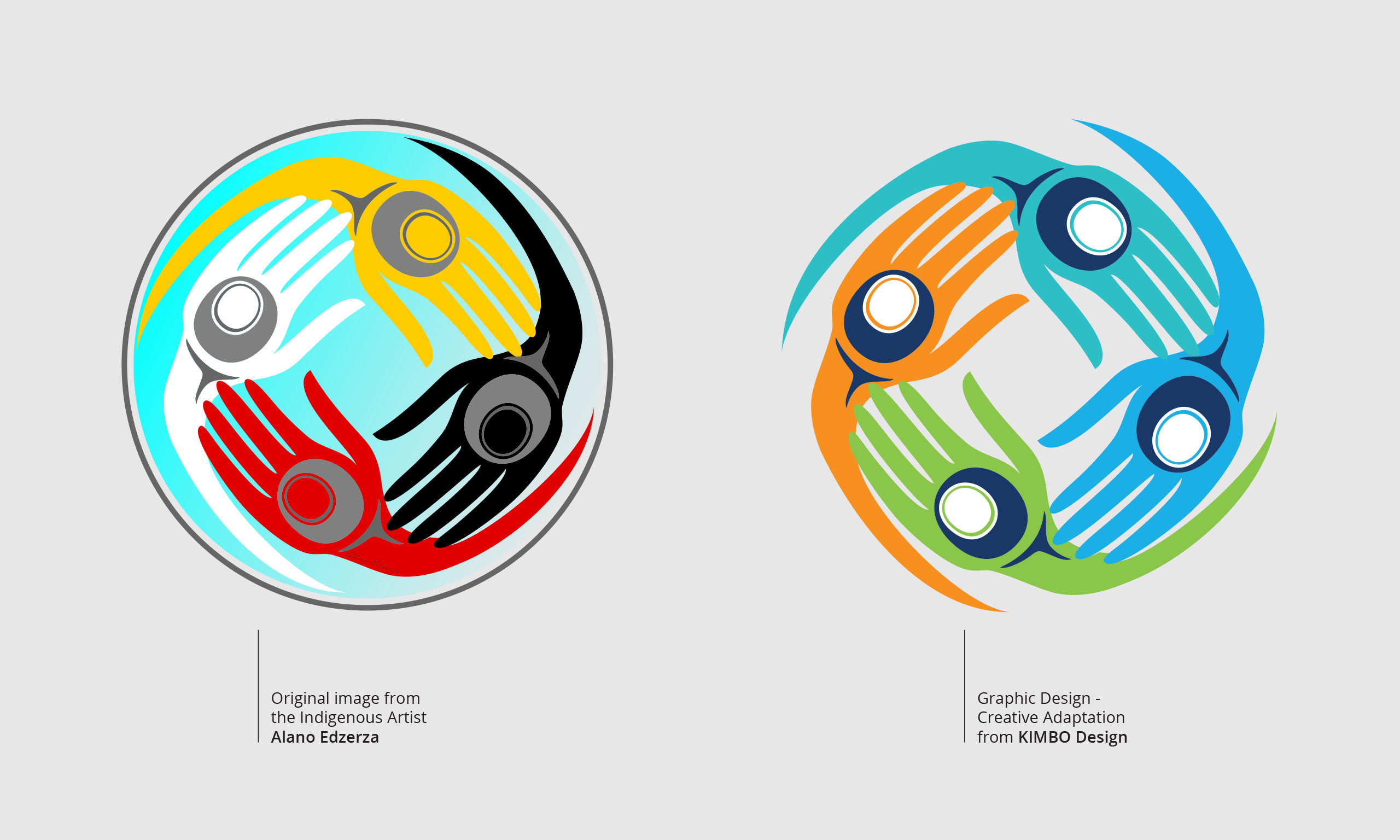Government agencies across British Columbia are increasingly prioritizing Indigenous inclusion, reconciliation, and cultural visibility in public communications. Whether it’s a community report, consultation materials, or event branding, marketing collateral that represents Indigenous voices must be created with authenticity, accuracy, and care.
As graphic designers working with public sector clients, we understand the responsibility of visually representing Indigenous communities in a way that supports both provincial policy and community expectations. Our work aligns with frameworks like the Declaration on the Rights of Indigenous Peoples Act (DRIPA), guiding how we build partnerships and co-create meaningful communications.
Here’s how KIMBO approach Indigenous marketing in ways that support government mandates and reconciliation goals:
Relationship-Centred Design: Community Comes First
Design begins with listening. We engage with Indigenous communities and knowledge keepers to ensure communications reflect local languages, traditions, and values. Our collaborative, relationship-based approach further supports government commitments to Indigenous self-determination and cultural revitalization.
The KIMBO designers often refer to resources from the First Peoples’ Cultural Council (FPCC), an Indigenous-led organization in BC that provides cultural, language, and artistic guidance.
Working with Indigenous Creatives
We actively collaborate with Indigenous artists, writers, translators, and illustrators, maintaining both authenticity and economic reconciliation. Our approach aligns with guidelines such as the BC Arts Council’s guide to working with Indigenous artists, which emphasizes consent, fair compensation, and cultural ownership. Without an Indigenous consultant or designer, we are aware that as non-Indigenous artists, we are not in a position to recreate other people’s lived experiences without guidance.
Respecting Symbolism and Cultural Protocols
Since Indigenous symbols and art forms are specific to Nations, territories, and teachings, we avoid generalizations and pan-Indigenous tropes, instead seeking guidance and permissions where necessary. Throughout our process, we keep an open-minded approach to correction and learning.
Our culturally informed approach is reinforced through optional training, such as the San’yas Indigenous Cultural Safety course, familiarizing ourselves with how to work across cultural contexts.

OCIO Artwork Adaptation
Design that Reflects Cultural Values
We blend cultural elements with accessibility and government branding standards to create communications that are both functional and respectful. Our typography, colour palettes, and layouts draw inspiration from traditional visual languages while meeting the practical needs of government audiences. Any material that aims to represent or speak to the relevant Indigenous community is reviewed by the Government of Communication and Public Engagement, as well as the relevant Indigenous communities.
When crafting language and terminology, we follow the UBC Indigenous Peoples Language Guide and BC Government Writing Guide to ensure respectful, accurate, and inclusive word choices.
Cultural Attribution and Intellectual Property Rights
We handle Indigenous content with care, ensuring contributors retain ownership of their work and that attribution is clearly defined. This reflects a broader understanding of Indigenous cultural and intellectual property, not just as content, but as knowledge systems that require respectful stewardship.
Supporting Government Reconciliation Goals
Design extends beyond visual; it’s a form of public storytelling. Whether we are creating material for public health campaigns, signage in Indigenous languages, or Orange Shirt Day collateral, we support the BC government’s efforts to implement UNDRIP through DRIPA and foster reconciliation through every communication channel.
Above compliance, communications involving Indigenous Peoples requires respect, cultural accountability, and meaningful collaboration. Our design process is built to support that: rooted in listening, guided by community voices, and aligned with BC’s reconciliation frameworks.
By creating collateral with Indigenous communities, governments and organization can build trust, strengthen relationships, and lead with integrity. Let’s work together to ensure your project reflects cultural integrity and aligns with reconciliation goals. Contact us to start the conversation.


